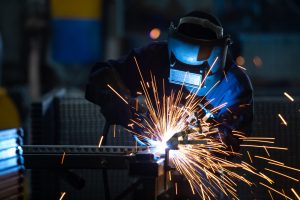
In many sectors, from manufacturing to construction, from interior design to the automotive sector and transport in general, the creation of high quality products and strong structures is a real challenge. Particularly during the design phase, decisions have to be made between fastening or welding systems to join components that may also be of different materials. When it comes to choosing between fastening and welding systems, a careful evaluation of numerous factors is required, including the receiving material, application area, cost, production time, working environment, safety regulations and maintenance requirements. The final decision should be based on a thorough understanding of these factors and the specific needs of the project.
Let’s take a detailed look at the factors to consider for the use of fasteners or welding in assembly projects.
Fastening Systems
Fastening systems consist of a variety of devices that allow different materials to be assembled, ensuring structural flexibility and tightness. Fastening systems are preferred when less structural stress is required with an even distribution of structural load, compared to welded joints, or the possibility of inspection, maintenance or replacement of the fastening system.
All the advantages of fastening systems:
- Fastening systems allow more flexibility with less structural stress than welded joints.
- They present no specific safety risks.
- The cost of fastening systems is generally lower than for welding.
- Fastening systems can be easily inspected, adjusted or replaced when necessary.
- They offer fast installation in the field
Welding
Welding is the permanent joining of two metal parts, with or without filler metal, achieved by fusing together the close edges of the parts to be joined.
The manual welding process is typically performed by specialised welders, using specific equipment. Special energy sources may also be required, depending on the type of welding.
A central aspect, when it comes to welding, is also the issue of safety in the workplace, as welding can involve specific risks: precautions must be taken to avoid burns, damage to eyesight, inhalation of fumes and gases, exposure to radiation, electric shocks and fires.
The Advantages of Welding:
- Welding produces a permanent, physical connection between metals and ensures high levels of strength and structural performance. Welding is suitable for a wide range of materials, including metals, alloys, plastics and even some composite materials.
- Welding eliminates the need to pierce materials, as is the case with some fastening systems, and this can contribute to the structural integrity of welded installations.
- Welding is often the preferred method of many professionals, but it is important to remember that it requires specialised skills to be performed correctly.
- Well executed welds can have a very high mechanical strength. This is especially important in applications where structural strength is required, such as in bridge construction or the automotive and transport industries.
- Welds usually require less maintenance than other forms of fasteners, which can become loose or corrode over time.
Fastening Systems or Welding: Factors to Consider
In general, the intended use of the product, and its structure, are among the key factors to consider when choosing between fasteners and welding. If the product must withstand heavy loads or mechanical stress, welding may be the best choice to ensure a secure and permanent fastening. Conversely, in applications where removability or replacement of parts is required, fasteners may undoubtedly be more suitable.
Finally, cost is always a critical factor to consider. Welding requires specialised equipment and highly skilled labour, which may entail significant costs; fastening systems, on the other hand, may be cheaper in terms of materials and labour.
